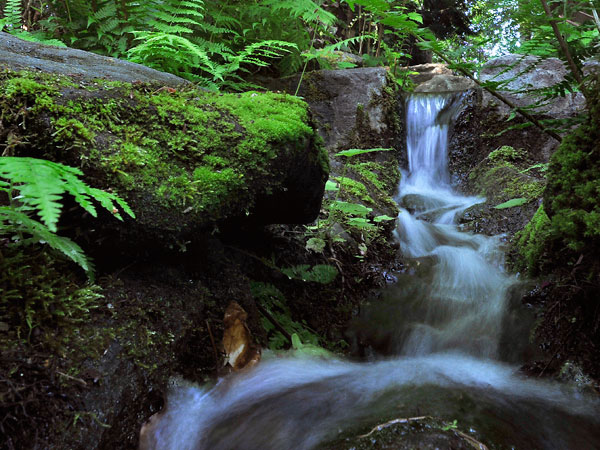Point Defiance Park: Tacoma, Washington

Summary
Described by one Tacoma resident as having "the beauty and adventure of a national park within minutes from home," Point Defiance juxtaposes urbanity with wilderness, and scenic views with volunteerism. Authors of the park's original 1911 master plan noted that the area's vistas were "as beautiful as views over land and water as can be seen in this or foreign lands" and found the mountainscape "toward the great Olympic range with its snow-capped peaks glistening in the sunshine ... to be equal to view[s] in Italy and the Mediterranean."
Designated Area
The 702-acre park, bounded on three sides by Puget Sound, is located at 5400 N. Pearl St.

Point Defiance offers views of snow-capped mountain peaks, old growth trees as old as 400 years, scenic viewpoints, and bike trails, all found within the city of Tacoma. Photo by Russ Carmack, courtesy Metro Parks Tacoma.
Planning Excellence
Shaping the history of the park, which juts dramatically into the Puget Sound six miles northwest of downtown Tacoma, has been the community's unwavering commitment since its inception. The city successfully lobbied the federal government in 1888 to repurpose the site from a military reservation to a park. By 1905, residents convinced the government to give the city title. Two years later voters approved a taxing district to pay for park maintenance.
A primarily mixed conifer forest, with old-growth trees — some believed to be older than 400 years — cover more than two-thirds of the park, making it one of the largest undisturbed forests of its kind in Puget Sound. Deer, fox, and bald eagles are plentiful, while scenic viewpoints and saltwater beaches offer chance sightings of whales and seals.
Volunteers representing varied interests and cultures regularly cultivate and maintain the park's eight gardens, while others help care for the natural areas by helping remove invasive species and assisting with trail maintenance. Easily accessible by car, bus, bike, and ferry, Point Defiance Park attracts an estimated two million or more visitors each year.

In the 1970s the community rejected plans for the revitalization of an old amusement park inside Point Defiance in favor of the park's natural features. Photo by Russ Carmack, courtesy Metro Parks Tacoma.
Defining Characteristics, Features
100 Years of Planning
- Metropolitan Park District, a taxing district created in 1907 for maintenance and development and since renamed Metro Parks Tacoma, still manages park
- Kansas City-based landscape architectural firm Hare & Hare created first formal park plan in 1911
- Following the Great Depression, the Civilian Conservation Corps and Works Progress Administration worked extensively in the park; still in use are restored buildings from Hudson's Bay Company's Fort Nisqually
- Proposals to attract Sea World and cut part of the old-growth forest for a steam train as well as revitalizing Funland, an old amusement park located on the grounds, were all rejected by the community in the 1970s
- The Metropolitan Park Board president upholds policy requiring park changes to come from community, focusing instead on the park's natural features.
- 1995 Forest Management Plan and 2010 Forest Stewardship Plan focus on sustainable stewardship of park's old-growth trees earning Metro Parks' Forest Stewardship Council certification.
- In 2008, three day-long charrettes were held to garner public opinion and ideas for a Concept Development Plan for the three main areas of the park — waterfront, attractions, and forest
- A planning process was begun in 2010 to refine waterfront concept plan and develop a master plan for that area
Community Commitment
- Tacomans appealed to President Grover Cleveland in 1888 to repurpose Point Defiance from a military reserve to a park; in 1905 President Theodore Roosevelt signed legislation giving city full title to park
- Park's first superintendent, Ebenezer Roberts, asked schoolchildren in 1895 to donate rose clippings to start a rose garden; today gardens have expanded to include iris, dahlia, fuchsia, and more; volunteers contribute time and plants
- Citywide 2005 Park Bond Program provides $5.5 million to improve Point Defiance Park; projects include restoration of the Pagoda, trail maintenance, soil decontamination and converting mowed turf to habitat plantings
- More than 1,500 citizens have engaged in the park's 2005 Park Improvement Bond planning since the process began in 2008
Diverse Landscapes, Activities
- In addition to old-growth forest with 450-year-old Douglas fir (Mountaineers Tree) are 250-foot vertical bluffs exposing rich geology
- Groups and individuals regularly gather at the park for picnics, weddings, organized runs, and other special events
- Saturday and Sunday mornings Five Mile Drive outer loop closed to cars, giving pedestrians and cyclists free rein in park's most popular destination
- Off-leash dog exercise area; fee-based attractions include Point Defiance Zoo & Aquarium

Volunteers maintain the park's eight gardens. The Rhododendron and Native Gardens serve as transitional spaces connecting the park's formal and natural areas. Photo by Joe Gledhill, courtesy Metro Parks Tacoma.
History and Culture
- Torii Gate, Shinto Shrine are gifts from Kitakyushu, Japan, Tacoma sister city
- Fort Nisqually Living History Museum interprets the Puget Sound's 19th century past as a Hudson's Bay Company trading post and area's first non-native settlement; the two original buildings are National Historic Landmarks
- The 1914 Pagoda, once a streetcar station and now an event facility, reminds visitors of the park's early days; undergoing an estimated $3 million restoration following 2011 arson fire and slated to reopen summer 2012
- The 1898 Lodge, built as the home for the park's first superintendent and his family, now used as rental facility.
- Poems from local residents adorn Owen Beach's concrete promenade
- Life-size bronze statue of Francis Cushman, Washington state representative when Park deeded to Tacoma in 1905, greets visitors to the park


